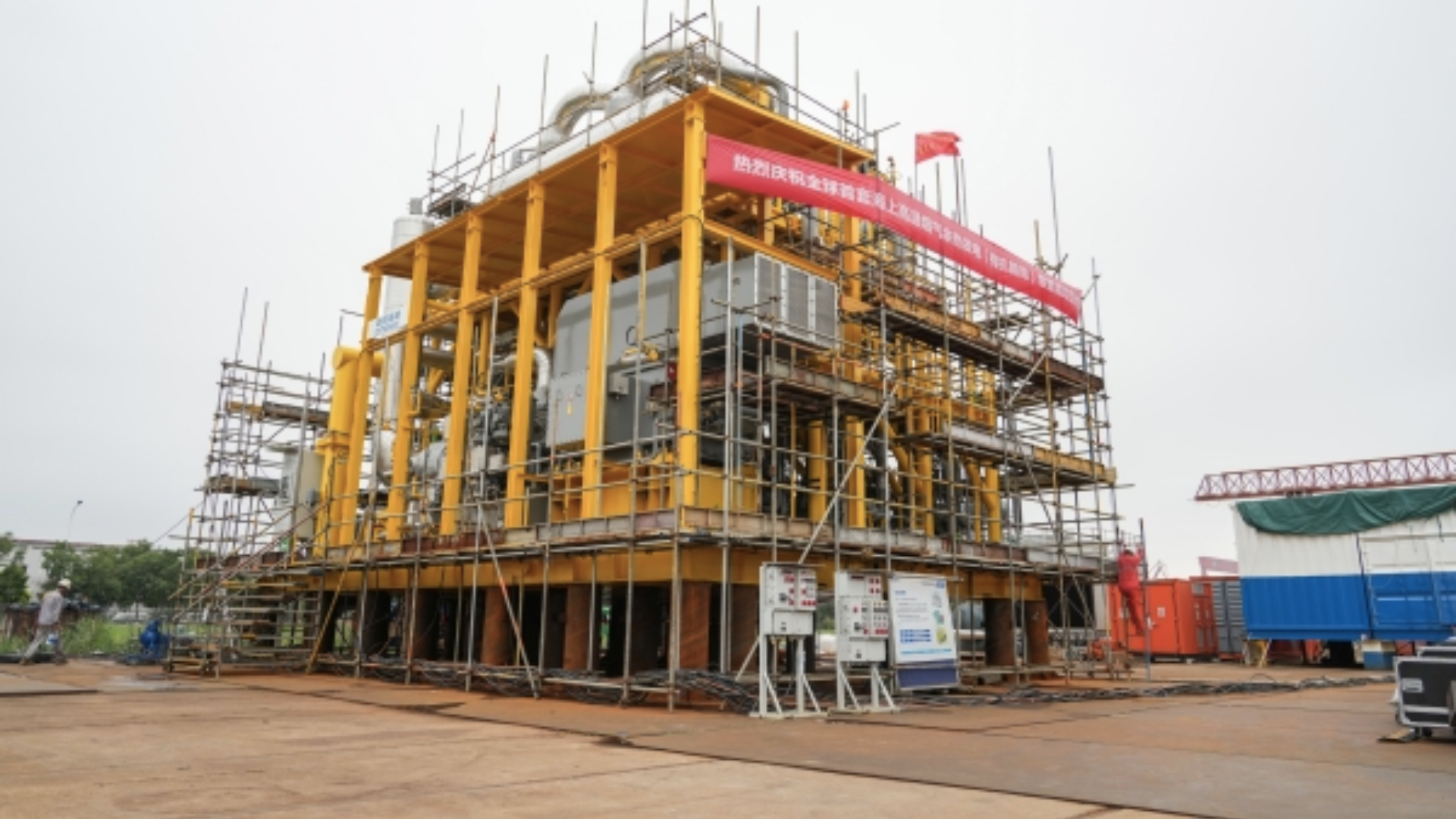China has successfully developed the world’s first 5 MW offshore plant to generate electricity from high-temperature flue gas waste heat. China National Offshore Oil Corp (CNOOC) delivered the plant to Tianjin.
The plant, which will be demonstrated as part of the Wenchang 9-7 oil field development project, is intended to advance the environmentally friendly and low-carbon development of offshore oil and gas fields under the dual carbon targets, according to CNOOC.
The unit effectively converts the waste heat generated during the operation of a power plant into clean electricity.
Plant is expected to increase the power plant’s waste heat utilization potential to 60-70 percent
The power plant acts as the “heart” of an offshore platform that generates electricity by burning the oil and gas produced on the platform.
However, this process releases a large amount of high-temperature flue gas, which becomes one of the main sources of carbon dioxide emissions from offshore oil and gas development, according to China’s State-Owned Assets Supervision and Administration Commission under the State Council.
Compared with traditional flue gas combustion and its associated emissions, the installation of this high-temperature waste heat power generation unit could increase the power plant’s waste heat utilization potential to 60 to 70 percent, significantly improving energy efficiency, China Daily reported.
Plant will increase energy efficiency of main power plant
This will increase the energy efficiency of the main power plant by around 7%. The plant will significantly reduce the consumption of crude oil and natural gas in offshore oil and gas fields.
With an annual electricity production of 40 million kilowatt hours, the plant could generate enough electricity to cover the annual needs of around 30,000 households.
In addition, the plant could save about 300 million cubic meters of natural gas and reduce carbon dioxide emissions by about 800,000 tons over a period of 20 years, which is equivalent to planting 7.5 million trees.
Unity represents significant technological breakthrough
CNOOC claimed that there are no established methods for using high-temperature waste heat offshore, either globally or domestically. The device represents a significant technological breakthrough in offshore oil and gas production, CGTN reported.
China also recently delivered the country’s largest offshore oil platform to Saudi Arabia. The country’s heaviest offshore oil and gas platform destined for the foreign market was completed and delivered at a manufacturing facility in Qingdao, east China’s Shandong province.
The completion of the Marjan platform for gathering and transporting oil and gas marks a breakthrough in China’s capacity to build large-scale offshore facilities for oil and gas production. The platform weighs more than 17,200 tons and is one of the largest in the world, Global Times reported.
The platform is taller than a 24-story building and has a deck area equivalent to 15 basketball courts. It was built in 34 months.
According to reports, the missile will depart on a large transport ship at the end of August to its intended deployment site some 6,400 nautical miles away.
ABOUT THE PUBLISHER
Prabhat Ranjan Mishra Prabhat, a graduate of the Indian Institute of Mass Communication, is a technology and defence journalist. He enjoys writing about modern weapons and new technologies, but also covers global politics and economics. He was previously associated with well-known media houses including International Business Times (Singapore Edition) and ANI.

